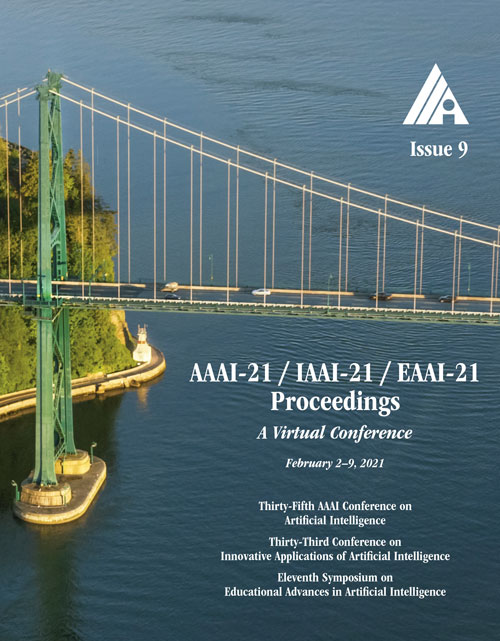Balanced Open Set Domain Adaptation via Centroid Alignment
DOI:
https://doi.org/10.1609/aaai.v35i9.16977Keywords:
Transfer/Adaptation/Multi-task/Meta/Automated LearningAbstract
Open Set Domain Adaptation (OSDA) is a challenging domain adaptation setting which allows the existence of unknown classes on the target domain. Although existing OSDA methods are good at classifying samples of known classes, they ignore the classification ability for the unknown samples, making them unbalanced OSDA methods. To alleviate this problem, we propose a balanced OSDA methods which could recognize the unknown samples while maintain high classification performance for the known samples. Specifically, to reduce the domain gaps, we first project the features to a hyperspherical latent space. In this space, we propose to bound the centroid deviation angles to not only increase the intra-class compactness but also enlarge the inter-class margins. With the bounded centroid deviation angles, we employ the statistical Extreme Value Theory to recognize the unknown samples that are misclassified into known classes. In addition, to learn better centroids, we propose an improved centroid update strategy based on sample reweighting and adaptive update rate to cooperate with centroid alignment. Experimental results on three OSDA benchmarks verify that our method can significantly outperform the compared methods and reduce the proportion of the unknown samples being misclassified into known classes.Downloads
Published
2021-05-18
How to Cite
Jing, M., Li, J., Zhu, L., Ding, Z., Lu, K., & Yang, Y. (2021). Balanced Open Set Domain Adaptation via Centroid Alignment. Proceedings of the AAAI Conference on Artificial Intelligence, 35(9), 8013-8020. https://doi.org/10.1609/aaai.v35i9.16977
Issue
Section
AAAI Technical Track on Machine Learning II

